Exponentially Adiabatic Switching in Quantum-Dot Cellular Automata
Abstract
1. Introduction
2. Two-Dot System
2.1. Model
2.2. Switching the Two-Dot System
3. Three-Dot Clocked QCA System
3.1. Model
3.2. Switching in the Three-Dot QCA System
3.3. Writing a Bit
3.4. Erasure with Copy
3.5. Three-State System: Erasure without Copy
4. Discussion
Author Contributions
Funding
Conflicts of Interest
References
- Wilson, L. International Technology Roadmap for Semiconductors (ITRS); Semiconductor Industry Association: Washington, DC, USA, 2013. [Google Scholar]
- Welser, J.J.; Bourianoff, G.I.; Zhirnov, V.V.; Cavin, R.K. The quest for the next information processing technology. J. Nanopart. Res. 2008, 10, 1–10. [Google Scholar] [CrossRef]
- Boechler, G.P.; Whitney, J.M.; Lent, C.S.; Orlov, A.O.; Snider, G.L. Fundamental limits of energy dissipation in charge-based computing. Appl. Phys. Lett. 2010, 97, 103502. [Google Scholar] [CrossRef]
- Landauer, R. Irreversibility and heat generation in the computing process. IBM J. Res. Dev. 1961, 5, 183–191. [Google Scholar] [CrossRef]
- Lent, C.S.; Tougaw, P.D. A device architecture for computing with quantum dots. Proc. IEEE 1997, 85, 541–557. [Google Scholar] [CrossRef]
- Kummamuru, R.K.; Timler, J.; Toth, G.; Lent, C.S.; Ramasubramaniam, R.; Orlov, A.O.; Bernstein, G.H.; Snider, G.L. Power gain in a quantum-dot cellular automata latch. Appl. Phys. Lett. 2002, 81, 1332–1334. [Google Scholar] [CrossRef]
- Orlov, A.O.; Kummamuru, R.; Ramasubramaniam, R.; Lent, C.S.; Bernstein, G.H.; Snider, G.L. A two-stage shift register for clocked quantum-dot cellular automata. J. Nanosci. Nanotechnol. 2002, 2, 351–355. [Google Scholar] [CrossRef] [PubMed]
- Christie, J.A.; Forrest, R.P.; Corcelli, S.A.; Wasio, N.A.; Quardokus, R.C.; Brown, R.; Kandel, S.A.; Lu, Y.; Lent, C.S.; Henderson, K.W. Synthesis of a Neutral Mixed-Valence Diferrocenyl Carborane for Molecular Quantum-Dot Cellular Automata Applications. Angew. Chem. 2015, 127, 15668–15671. [Google Scholar] [CrossRef]
- Qi, H.; Sharma, S.; Li, Z.H.; Snider, G.L.; Orlov, A.O.; Lent, C.S.; Fehlner, T.P. Molecular quantum cellular automata cells. Electric field driven switching of a silicon surface bound array of vertically oriented two-dot molecular quantum cellular automata. J. Am. Chem. Soc. 2003, 125, 15250–15259. [Google Scholar] [CrossRef] [PubMed]
- Lent, C.S.; Isaksen, B. Clocked molecular quantum-dot cellular automata. IEEE Trans. Electron Devices 2003, 50, 1890–1896. [Google Scholar] [CrossRef]
- Jiao, J.; Long, G.; Grandjean, F.; Beatty, A.; Fehlner, T. Building blocks for the molecular expression of Quantum Cellular Automata: Isolation and charactacterization of a covalently bonded square array of two ferrocenium and two ferrocene complexes. J. Am. Chem. Soc. 2003, 125, 7522–7523. [Google Scholar] [CrossRef] [PubMed]
- Blair, E.P.; Yost, E.; Lent, C.S. Power dissipation in clocking wires for clocked molecular quantum-dot cellular automata. J. Comput. Electron. 2010, 9, 49–55. [Google Scholar] [CrossRef]
- Griffiths, D.J.; Schroeter, D.F. Introduction to Quantum Mechanics; Cambridge University Press: Cambridge, UK, 2018. [Google Scholar]
- Shampine, L.F.; Reichelt, M.W. The matlab ode suite. SIAM J. Sci. Comput. 1997, 18, 1–22. [Google Scholar] [CrossRef]
- Landau, L.D. Zur theorie der energieubertragung II. Phys. Z. Sowjetunion 1932, 2, 1–13. [Google Scholar]
- Zener, C. Non-adiabatic crossing of energy levels. Proc. R. Soc. Lond. A 1932, 137, 696–702. [Google Scholar] [CrossRef]
- Wittig, C. The Landau- Zener Formula. J. Phys. Chem. B 2005, 109, 8428–8430. [Google Scholar] [CrossRef] [PubMed]
- Hänninen, I.; Lu, H.; Blair, E.P.; Lent, C.S.; Snider, G.L. Reversible and adiabatic computing: energy-efficiency maximized. In Field-Coupled Nanocomputing; Springer: Berlin, Germany, 2014; pp. 341–356. [Google Scholar]
- Comparat, D. General conditions for quantum adiabatic evolution. Phys. Rev. A 2009, 80, 012106. [Google Scholar] [CrossRef]
- Lent, C.S.; Liu, M.; Lu, Y. Bennett clocking of quantum-dot cellular automata and the limits to binary logic scaling. Nanotechnology 2006, 17, 4240. [Google Scholar] [CrossRef] [PubMed]

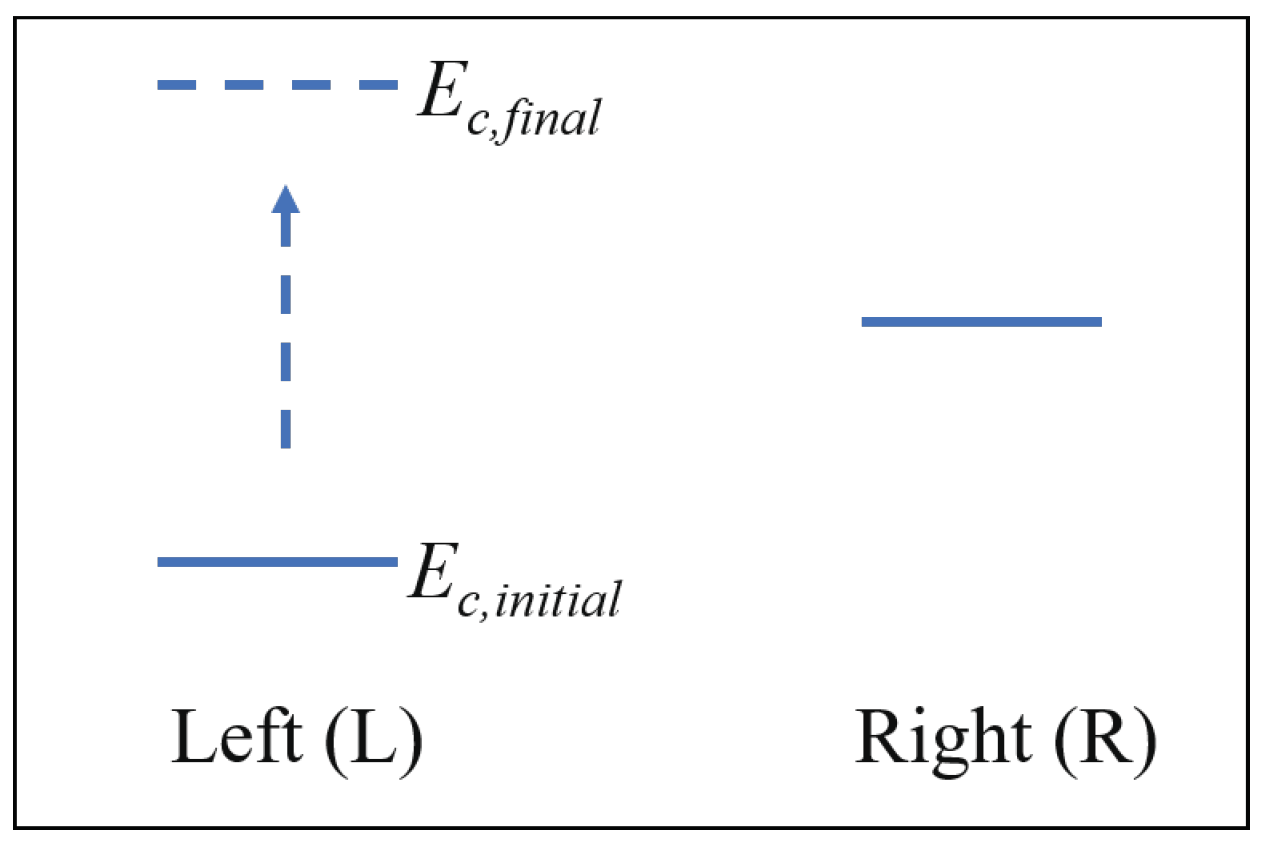
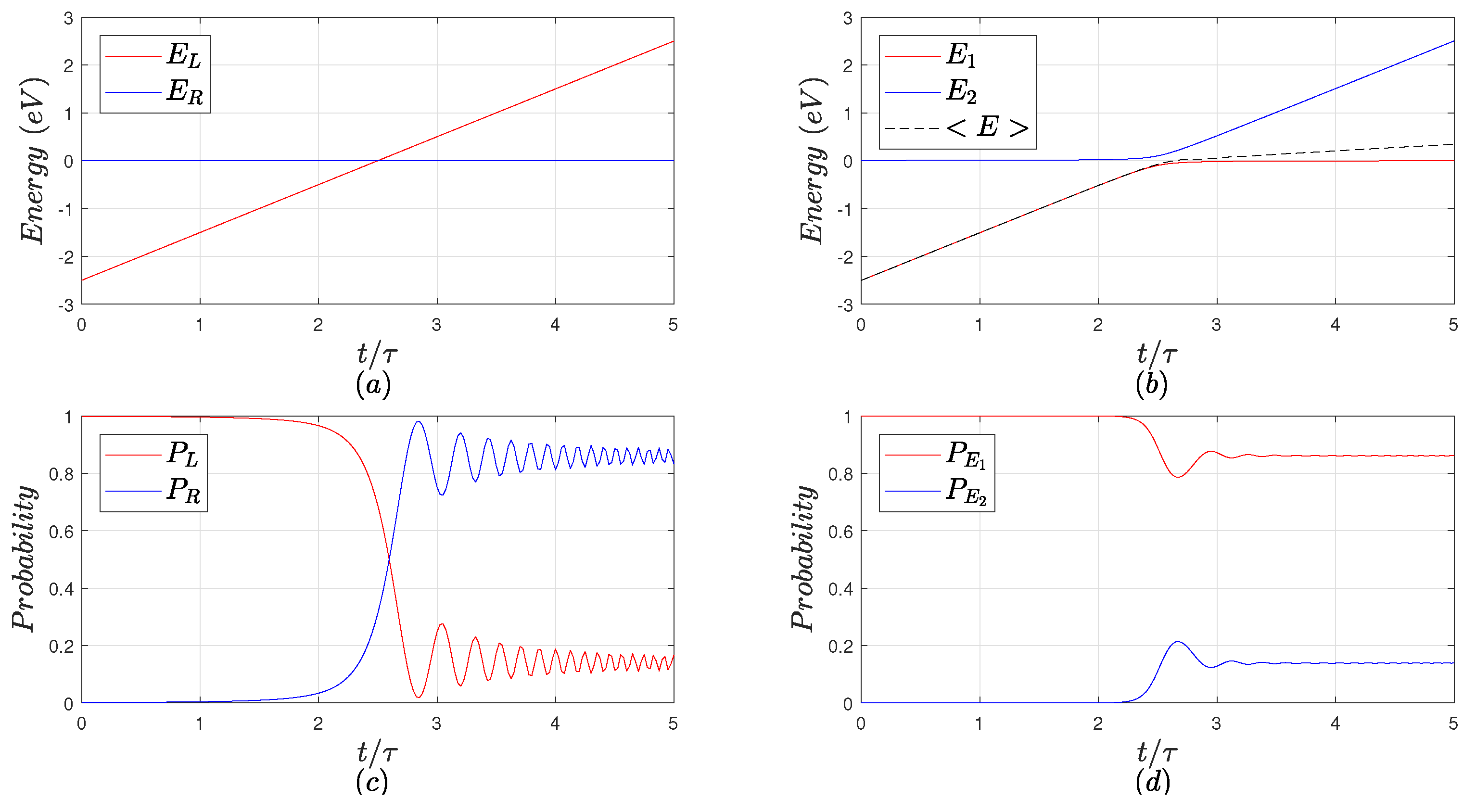
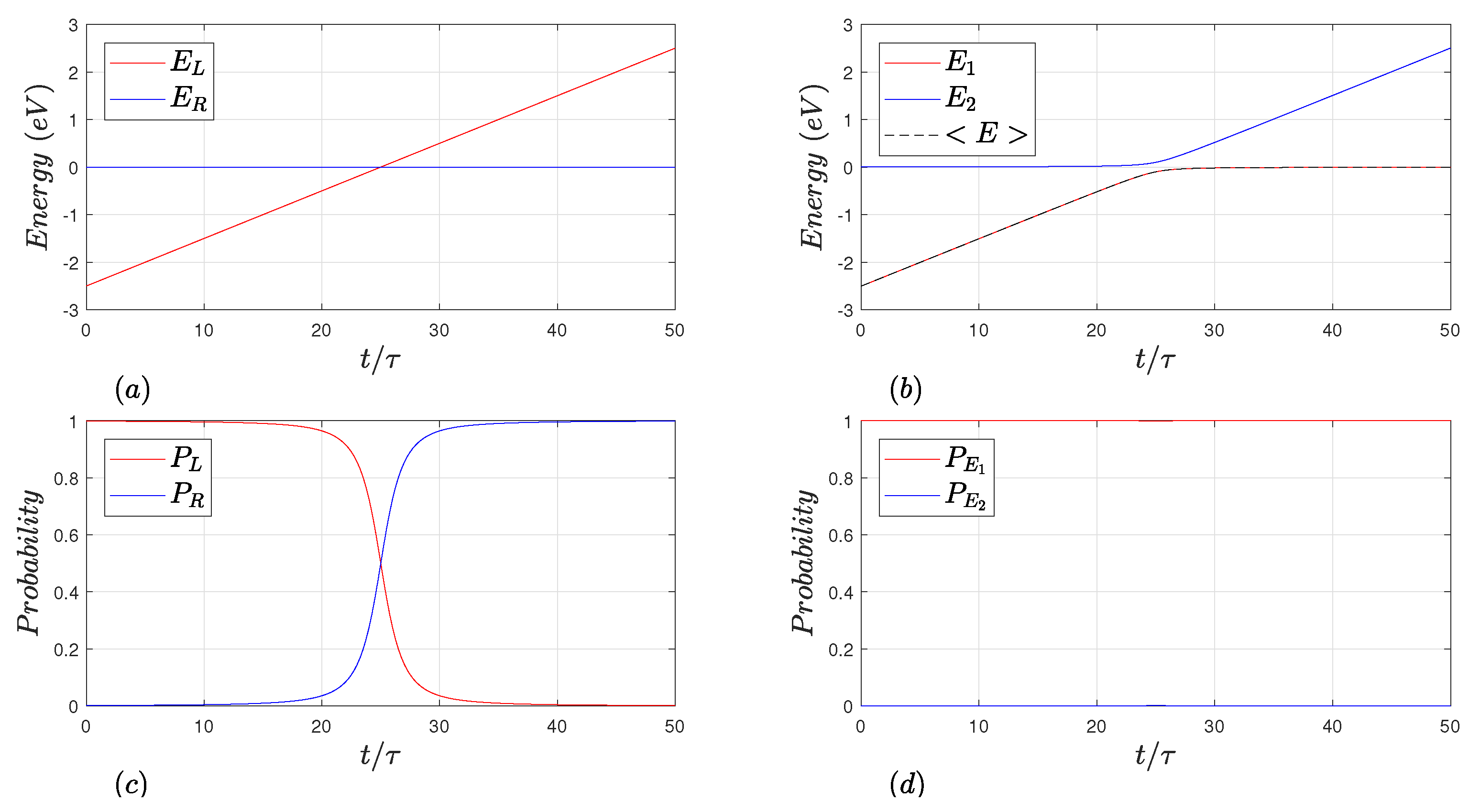
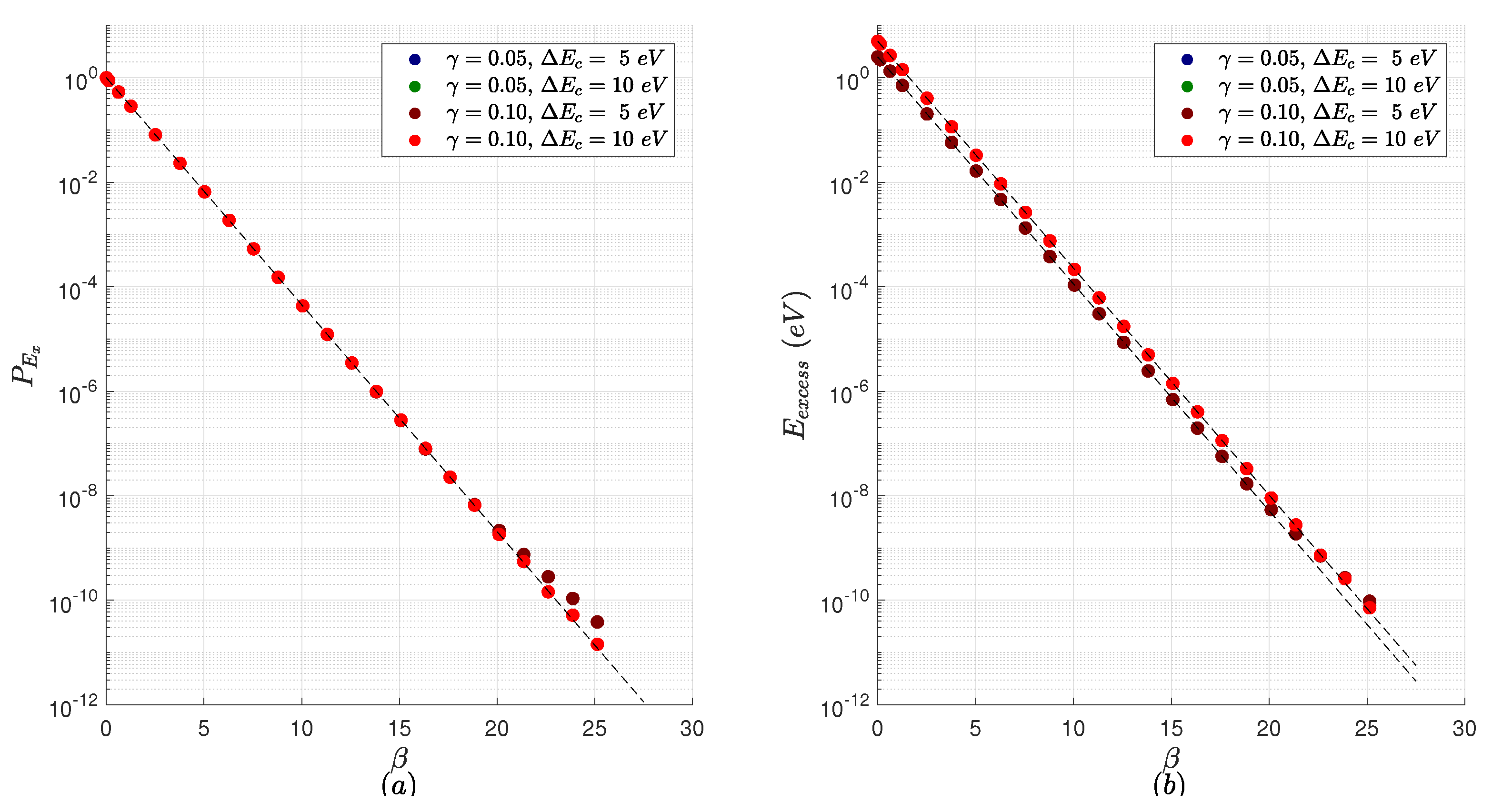
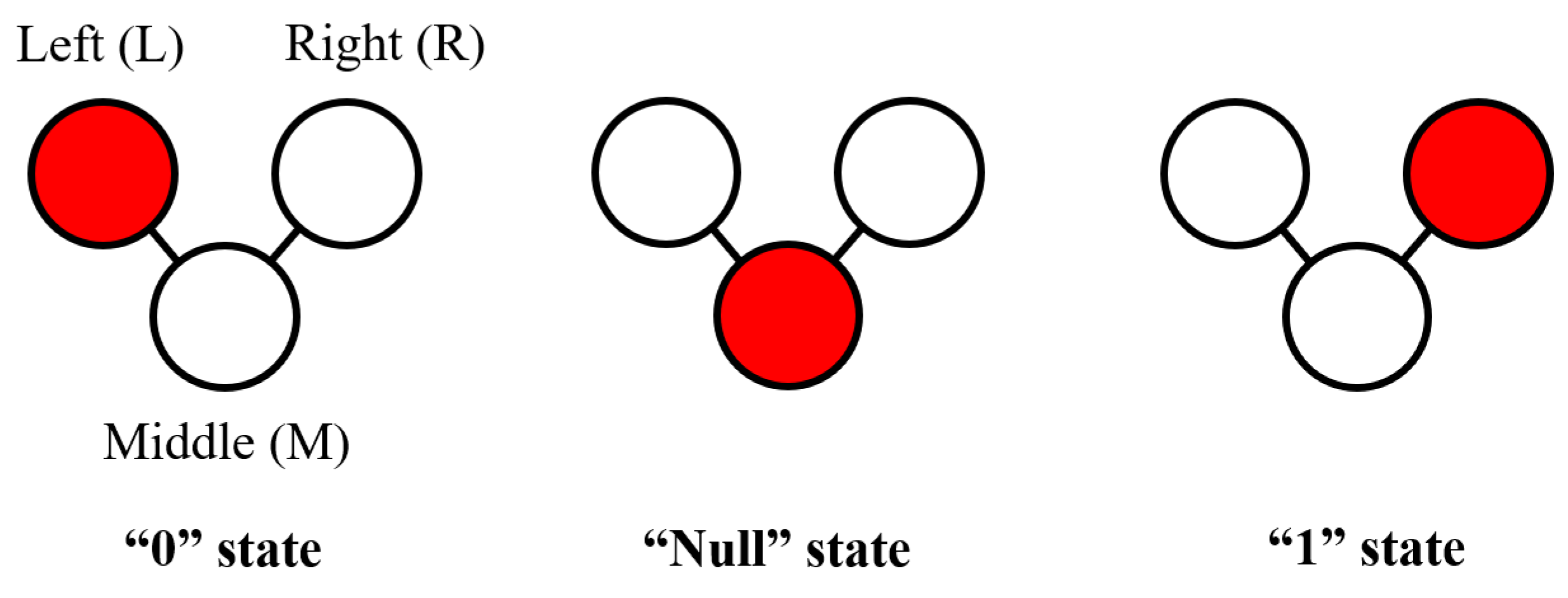
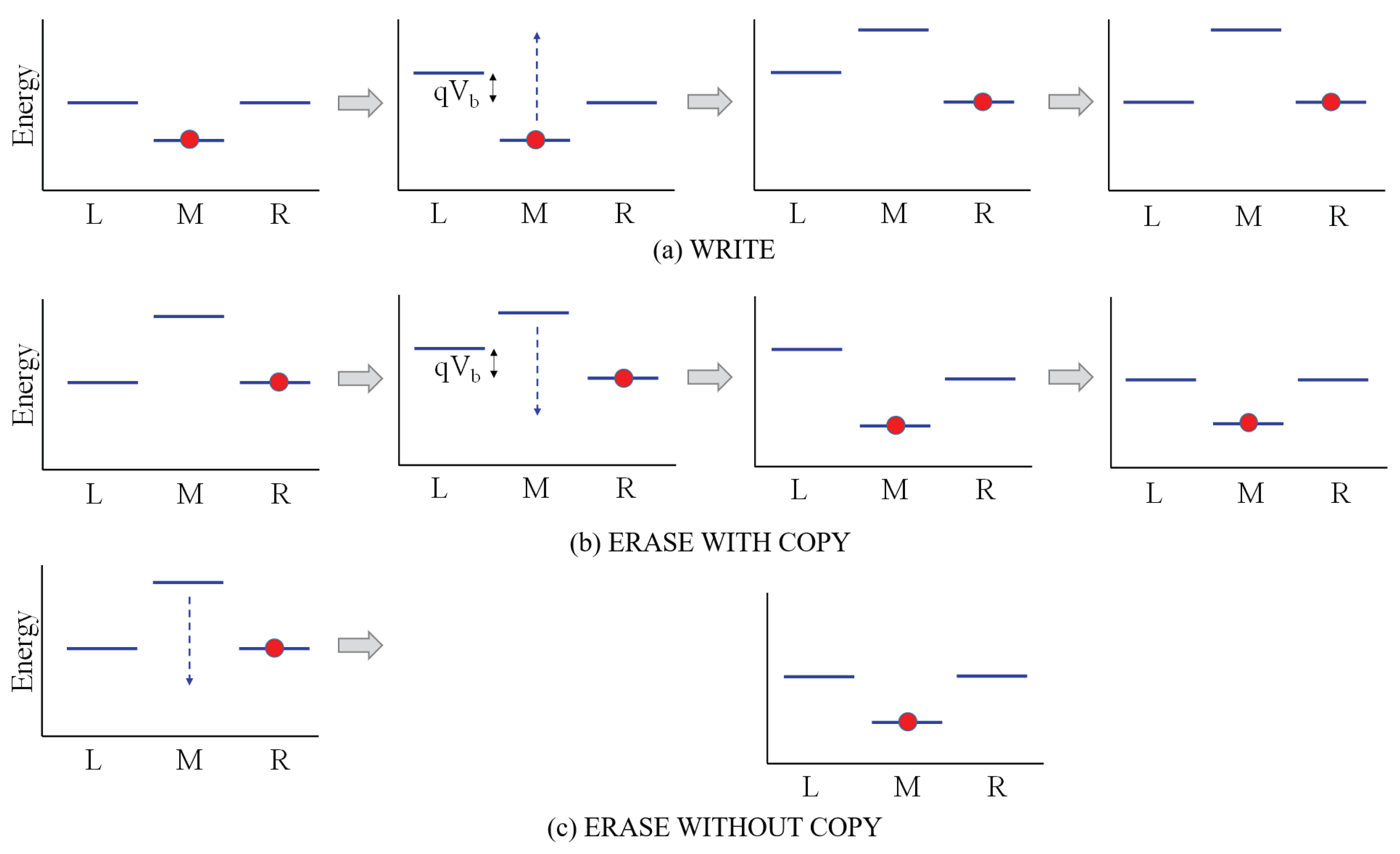
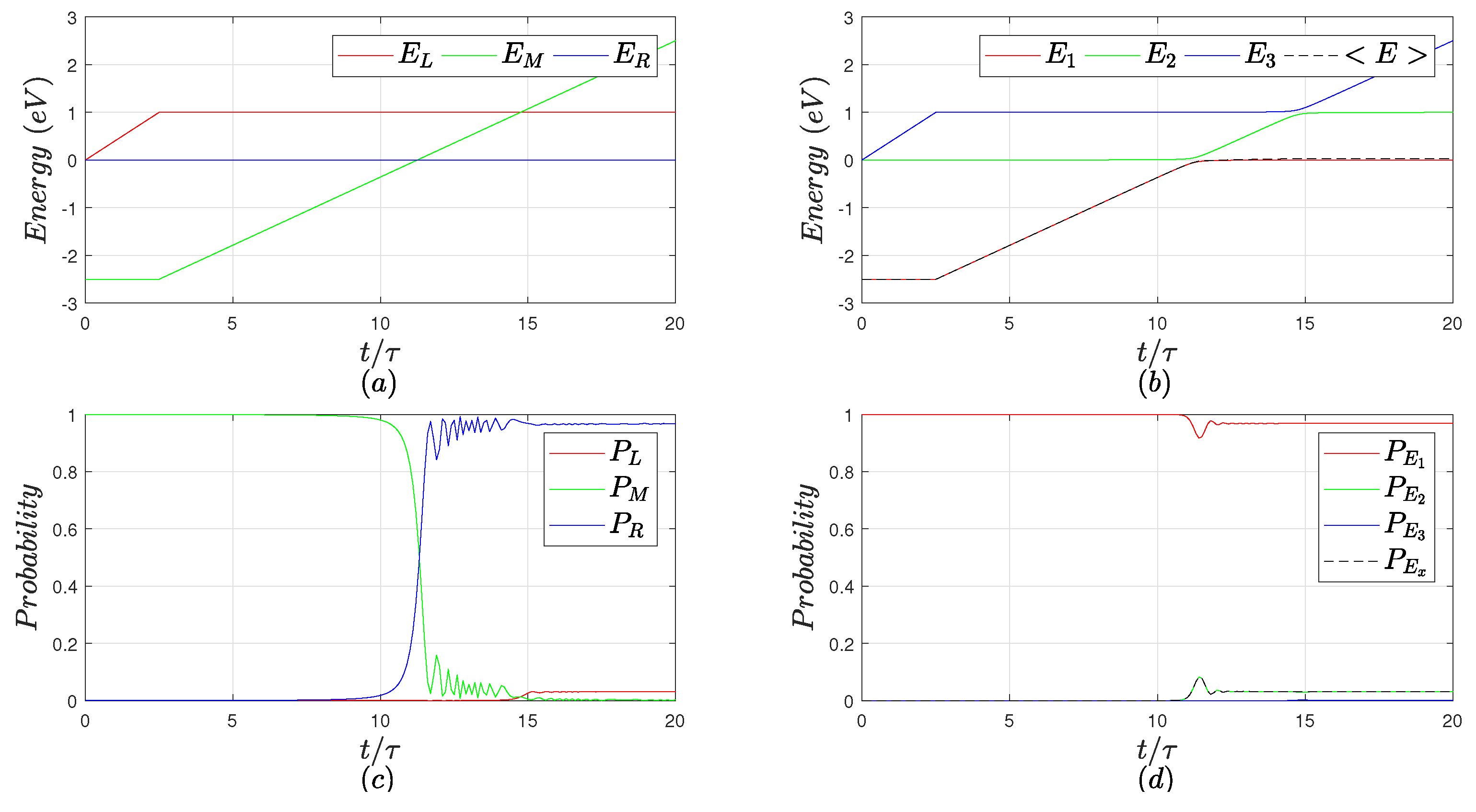

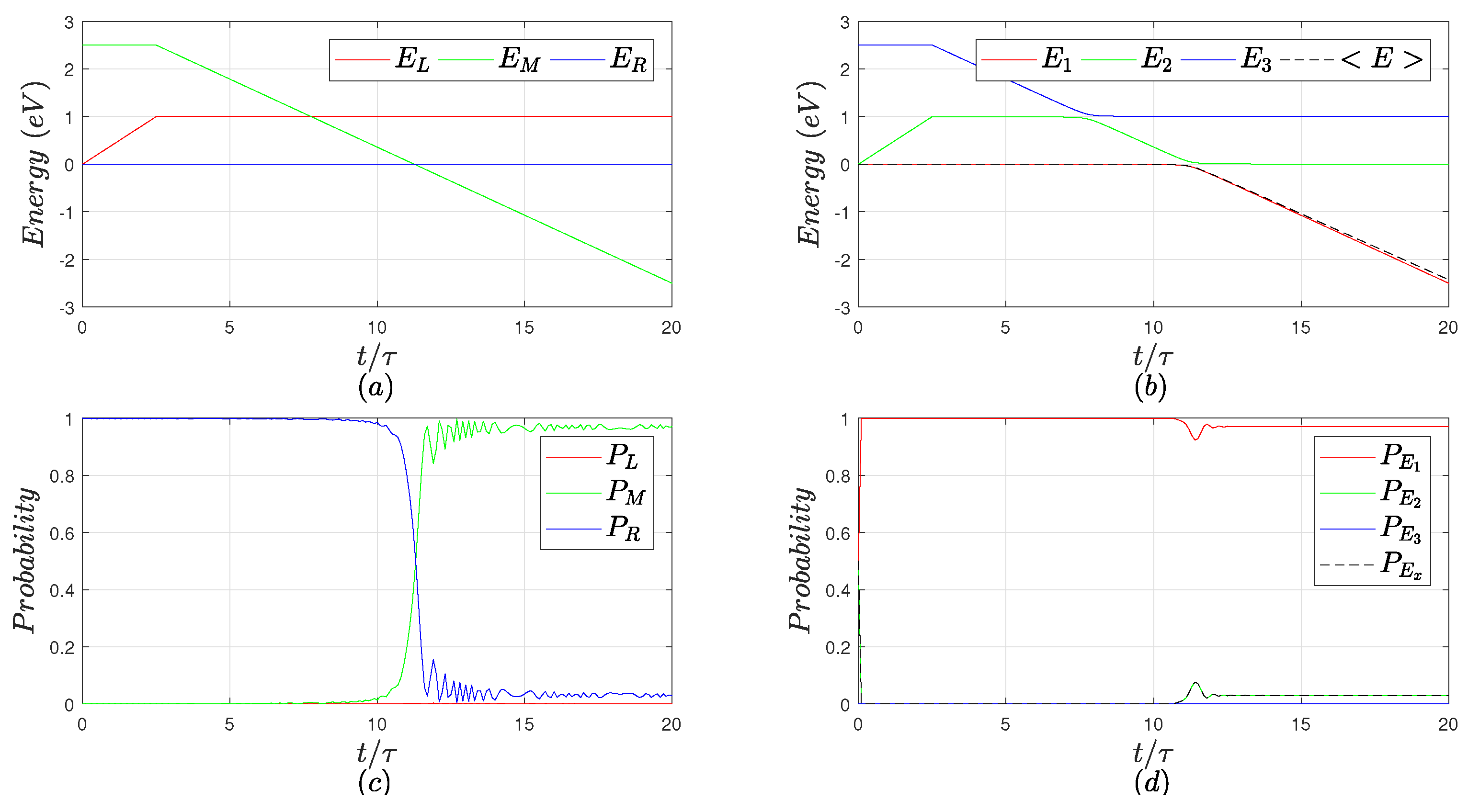

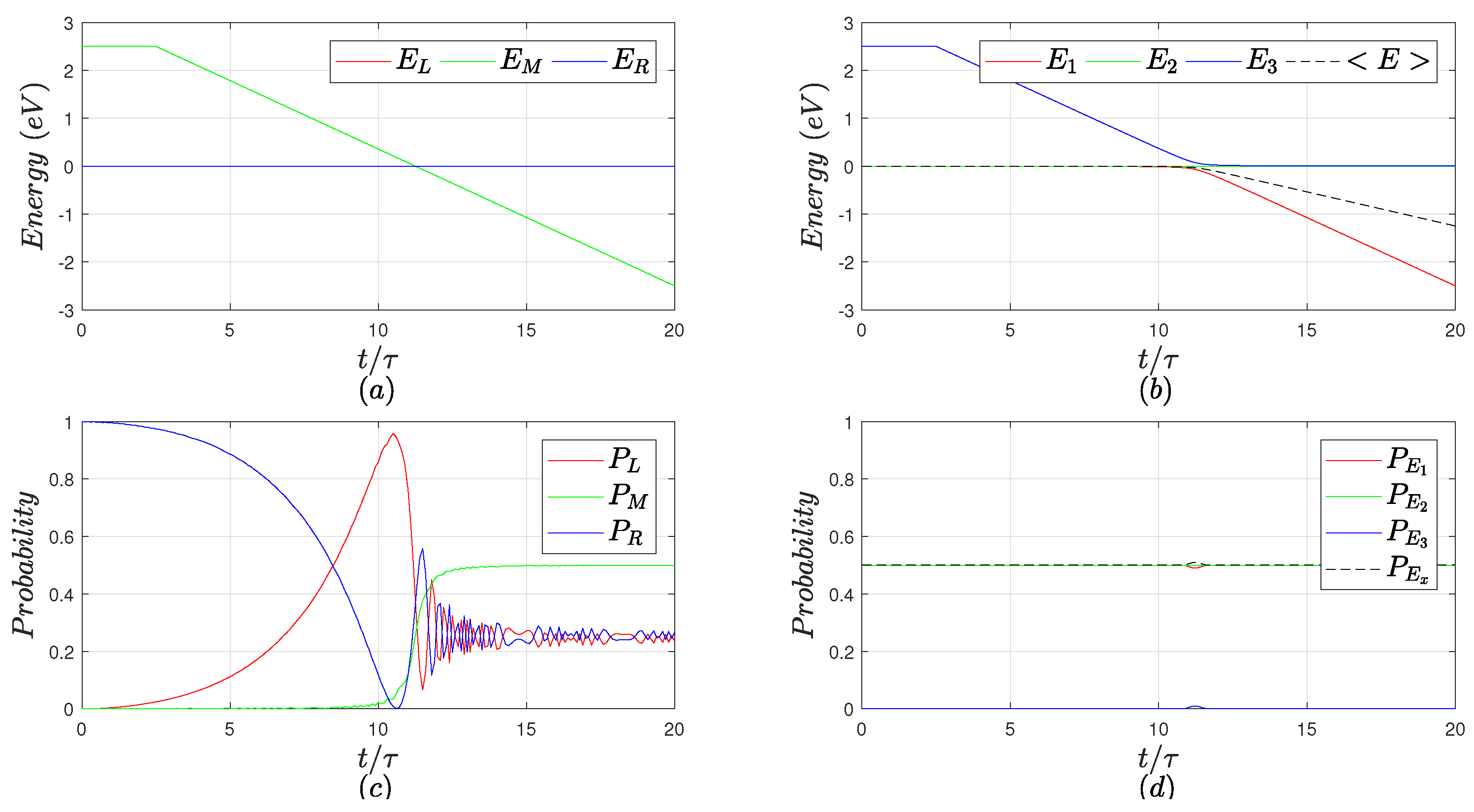
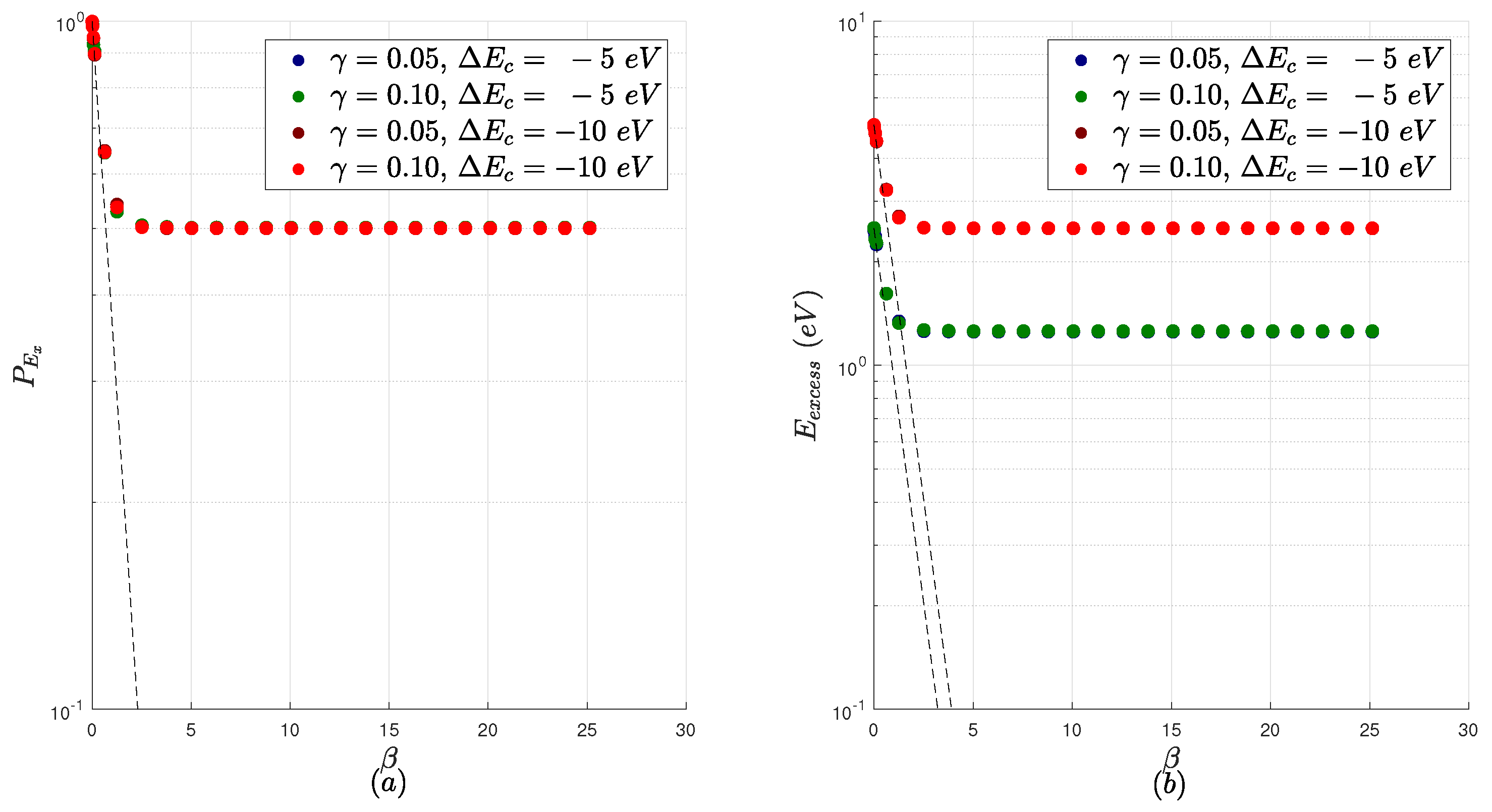
© 2018 by the authors. Licensee MDPI, Basel, Switzerland. This article is an open access article distributed under the terms and conditions of the Creative Commons Attribution (CC BY) license (http://creativecommons.org/licenses/by/4.0/).
Share and Cite
Pidaparthi, S.S.; Lent, C.S. Exponentially Adiabatic Switching in Quantum-Dot Cellular Automata. J. Low Power Electron. Appl. 2018, 8, 30. https://doi.org/10.3390/jlpea8030030
Pidaparthi SS, Lent CS. Exponentially Adiabatic Switching in Quantum-Dot Cellular Automata. Journal of Low Power Electronics and Applications. 2018; 8(3):30. https://doi.org/10.3390/jlpea8030030
Chicago/Turabian StylePidaparthi, Subhash S., and Craig S. Lent. 2018. "Exponentially Adiabatic Switching in Quantum-Dot Cellular Automata" Journal of Low Power Electronics and Applications 8, no. 3: 30. https://doi.org/10.3390/jlpea8030030
APA StylePidaparthi, S. S., & Lent, C. S. (2018). Exponentially Adiabatic Switching in Quantum-Dot Cellular Automata. Journal of Low Power Electronics and Applications, 8(3), 30. https://doi.org/10.3390/jlpea8030030




